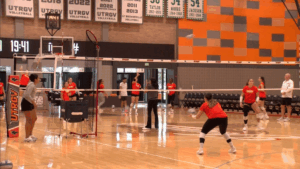EDINBURG- This weekend—the moon will cover the sun—partially. Known as an annular solar eclipse.
Spectators can view this phenomenon at the HEB Planetarium’s anniversary.
Starting in 1963, the HEB Planetarium has been a staple at UTRGV, gathering crowds of students from across the valley. Where they view a selection of movies to learn all about the final frontier.
Now 60-years later, the planetarium coordinator, Chelsea Lyssy, says visitors will be able to view the spectacle while taking part in other activities. “We also will have planetarium presentations here, for those who would like to come and see one, and we would also have hands on activities, demonstrations provided by the c-stem,” said Lyssy. She continued by saying, “Dr. Gonzalez will be here to talk about the la villa meteorite, that we have here house at the planetarium.”
Annular solar eclipses should not be confused with normal solar eclipses, or lunar eclipses. So, what is different about the annular solar eclipse?
The director of the planetarium, Cristina Villalobos, helps answer this question. “And an annular solar eclipse occurs once, once, once every one to two years and so, what basically it is, is that the moon gets between the sun and the Earth but the moon doesn’t completely cover the sun, and so that’s why we, we see a ring of fire around the sun and we call that an annular eclipse,” said Villalobos.
After the Oct. 14, eclipse–according to National Aeronautics and Space Administration the next annular solar eclipse is on June 21, 2039.





